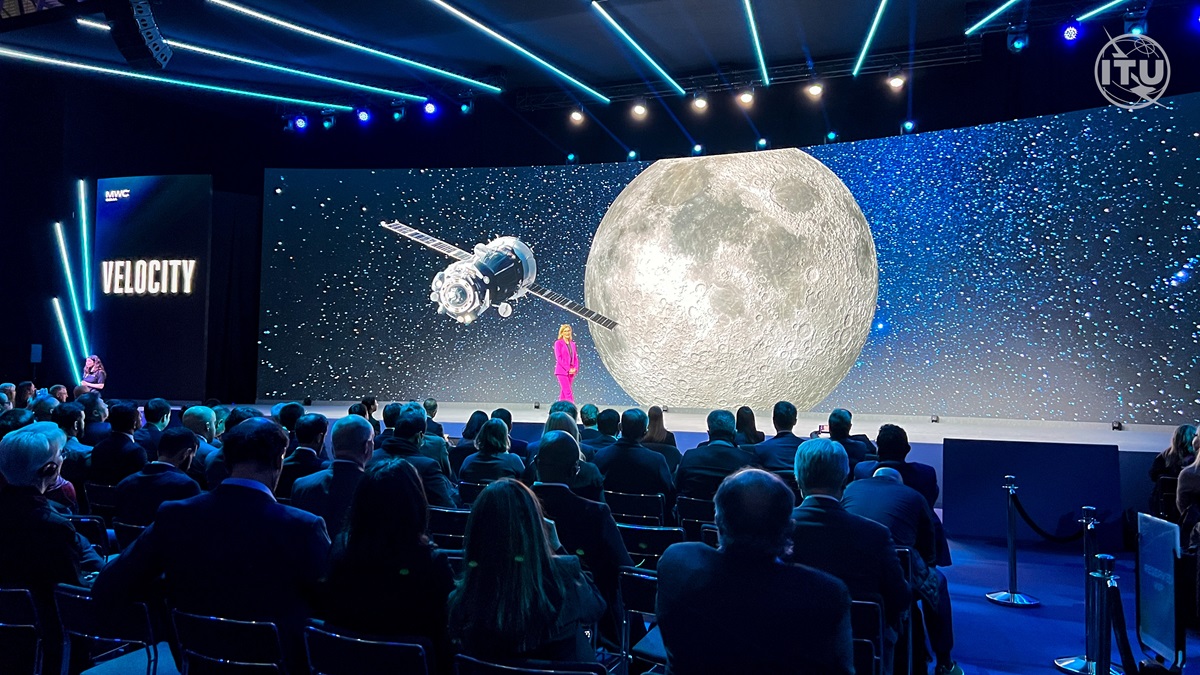Forging responsible space cooperation
Throughout 2025, the International Telecommunications Union celebrates its 160th anniversary. Its modern digital mandate touches earth, sea and sky.
This blog about space communications is the first in a series for International Geneva examining ITU’s contribution to pressing global issues. It explores how the organization enhances Geneva as a hub for innovation, diplomacy and multilateralism and complements Switzerland’s unique role in the space industry.
Eyes on space
Humankind has gazed into the night sky for millennia, tracking the orbit of stars, the swish of comets, and the haze of the Milky Way. But today, the average person may confuse stars and planets with satellites.
Small wonder, with thousands of satellites in active orbit. These satellites provide welcome connectivity to remote areas of our planet, vital observations to guide agriculture, emergency telecommunications, and valuable data for research, commerce, and government policy decisions. Following decades of geostationary satellites at nearly 36,000 kilometers above the Equator, numerous small satellites are now forming constellations in low Earth orbit, circling at altitudes of 2,000 kilometers or less.
Yet exponential growth brings challenges, from the possibility of collision and critical service breakdowns to mounting space debris. As the number of active satellites skyrockets, the use of outer space requires multilateral cooperation like never before. Counterintuitive as it may seem, space for orbits is not infinite.
Balancing space interests
Did you know that ITU manages one of humanity’s most important space-related resources? Radio frequencies for wireless data transmission, from mobile phones to Wi-Fi, TV and satellite communications are all under the purview of the Geneva-based organization, which began coordinating “wireless telegraphy” in 1906 and became a UN specialized agency in 1947. ITU’s first space conference initiated international radio spectrum coordination on satellite orbits in 1963.
Radio frequencies, just like water, are a finite public good that needs to be shared. Only so much data can be transmitted on those frequencies, and crowded frequency bands result in electromagnetic interference, affecting communications systems, the aerospace industry, the military and even household appliances.
This is where ITU comes in. The ITU Radio Regulations , continuously updated for more than a century, is the foundation for use of the radio spectrum, both on Earth and in Outer Space. ITU, registers, coordinates and assigns frequencies to authorized terrestrial and space systems, and continuously develops global standards for responsible space use.
To mitigate risks, ITU facilitates communication among governments and regulators, academic researchers and technical experts, and industries using radio spectrum resources. It enables them to report interference, avoid misunderstandings, and avoid or reduce tensions over the use of orbits.
It also compiles deorbit and disposal strategies, in cooperation with UN partners and governments around the world. This encourages users to follow guidance from the UN Office for Outer Space Affairs and leave space as clean as they found it.
Today, all countries depend on satellite services to boost connectivity and gather data for critical decision-making. Yet even if the cost of launching and maintaining ever-smaller satellites has dropped, space ventures remain expensive. ITU also conducts extensive advocacy efforts to bring satellite benefits to those who cannot afford them.
“Not everyone has equal access,” said ITU Secretary-General Doreen Bogdan-Martin. This is very much a socioeconomic issue. “As the UN agency for digital technologies and the custodian of radio spectrum on Earth and space, ITU has a crucial role to play.”
Geneva: A tradition of space multilateralism
Like a Swiss watch, Geneva brings a quiet tradition of precision and patience to multilateral space diplomacy. As early as 1960, just three years after Sputnik 1 (the first artificial satellite) orbited Earth, the city hosted a European Preparatory Commission for Space Research – the forerunner of the European Space Agency. The world’s first conference to allocate frequency bands for space services – the ITU space conference – soon followed.
Today, Geneva and ITU continue promoting responsible, internationally coordinated space activities. In March 2025, ITU signed a landmark agreement with the European Space Agency to cooperate on radio spectrum use, monitoring technologies, and information exchange. Switzerland is a founding member of the agency, which now encompasses 23 member countries across Europe and associate participants including Canada.
This complements ITU agreements to counter satellite-related risks to the radio spectrum. In February, ITU signed an agreement with Qatar to help monitor harmful interference through the country’s six earth stations. ITU has similar agreements with Belarus, Brazil, China, Germany, Oman, Pakistan, the Republic of Korea, and Vietnam forming a valuable global monitoring network.
Space cooperation within the UN system keeps ITU in regular contact with other Geneva-based organizations, such as the Conference on Disarmament and UNIDIR (space security), the World Meteorological Organization (meteorological satellites), and UNOSAT (satellite imagery in disaster assistance).
Nearby EPFL – the Swiss Federal Technology Institute of Lausanne – has a dedicated programme connecting business to space research.
As the industry continues growing and evolving, ITU is well-placed in Geneva to keep satellites communicating and orbiting smoothly.
Switzerland: Chocolate, cheese, watches, and… satellite chipsJames Bond aficionados recognize Switzerland’s Omega moon watch, worn by US astronauts as well as Bond actors. Switzerland now provides atomic clocks for Galileo, Europe’s global navigation satellite system. As satellites get smaller and supply chains diversify, Switzerland is moving up the value chain, providing sophisticated microchips, forming start-ups to handle space debris, and devising other high-tech solutions for the growing space sector. |
